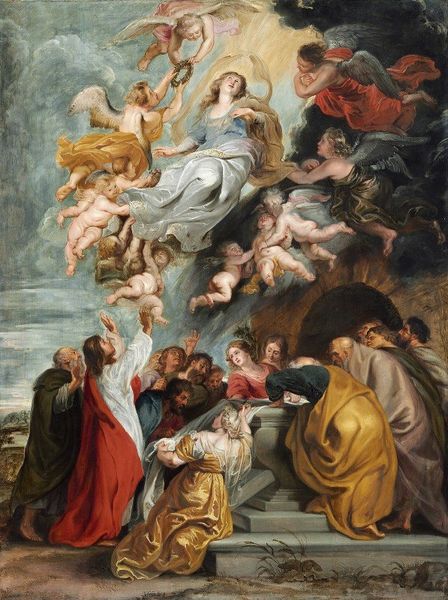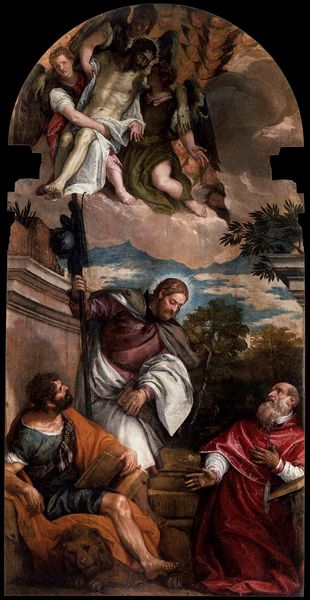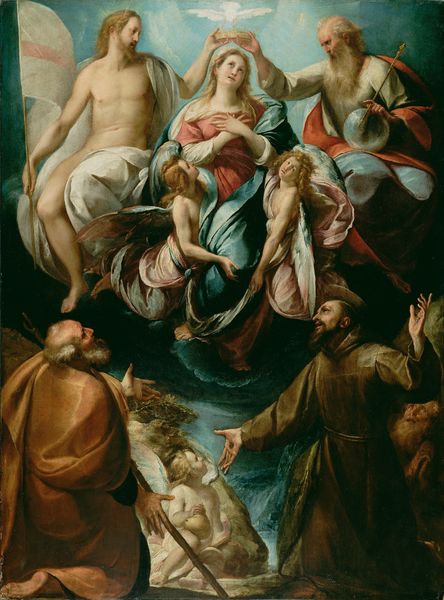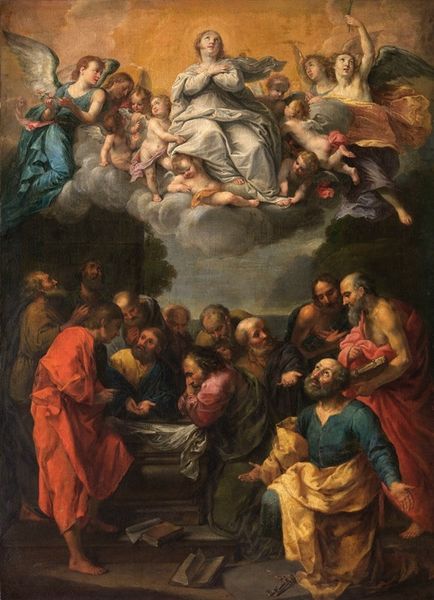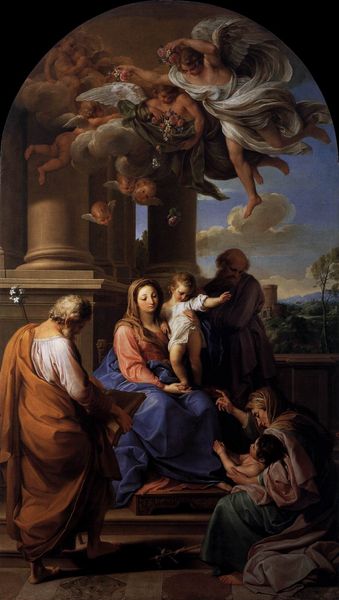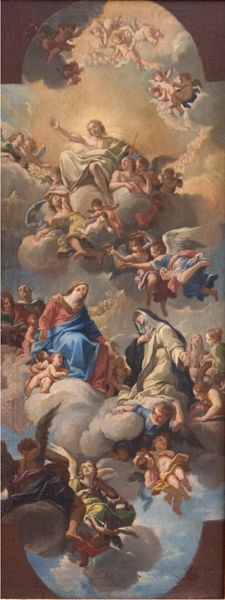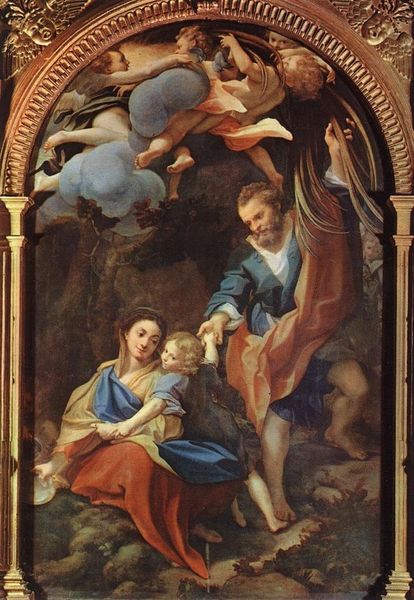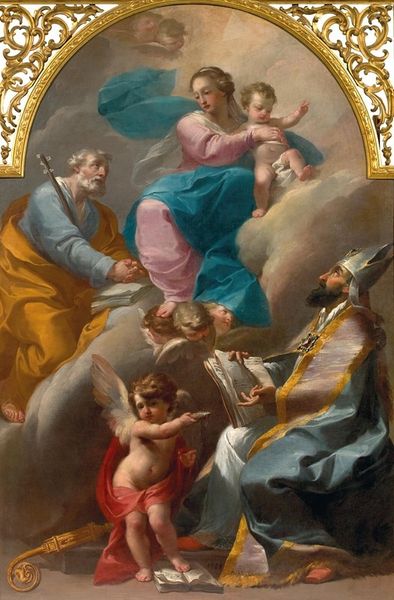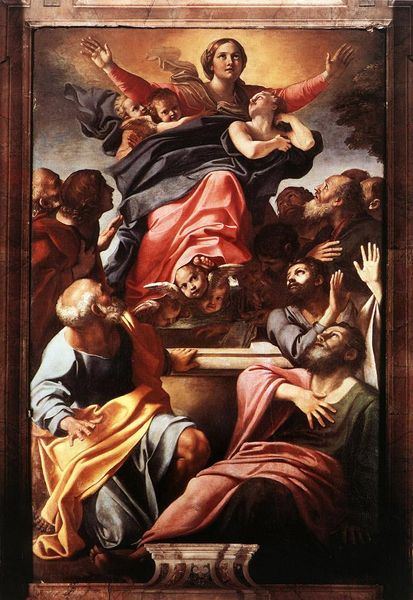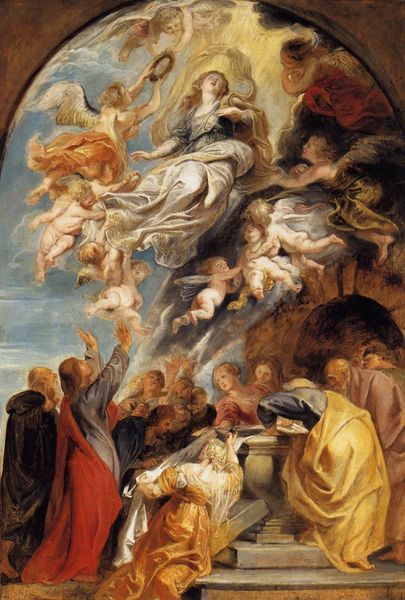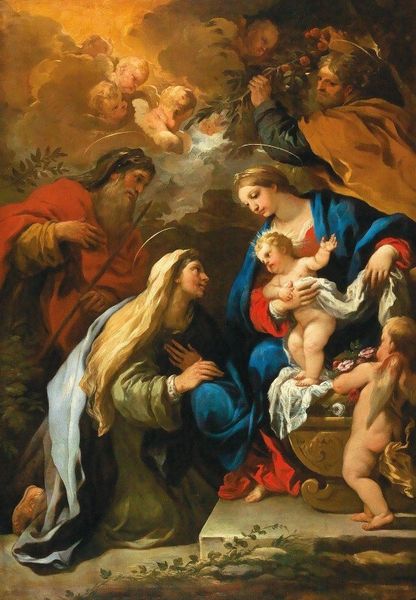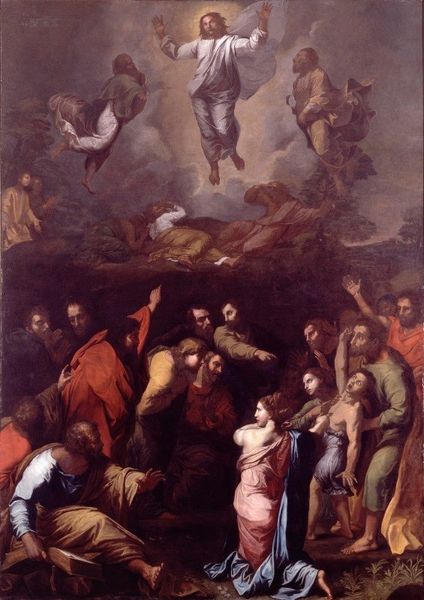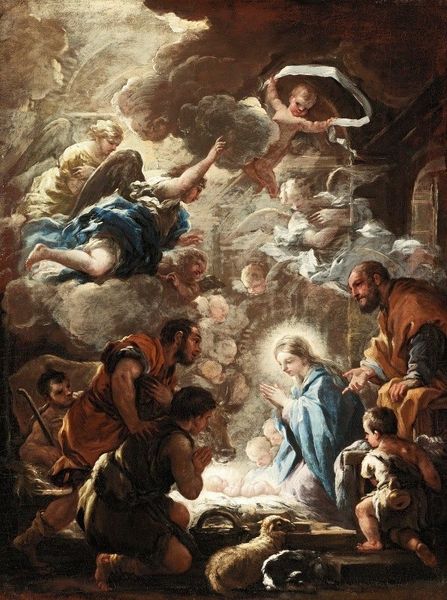
painting, oil-paint
#
portrait
#
baroque
#
painting
#
oil-paint
#
oil painting
#
history-painting
#
portrait art
Copyright: Public Domain: Artvee
Curator: This stunning canvas, titled "Christ in Glory with Saints Celsus, Julian, Marcionilla, and Basilissa," was completed by Pompeo Batoni between 1736 and 1737. The composition is breathtaking, a true testament to Baroque ideals! Editor: It’s immediately striking, isn't it? The colors are so luminous, and Christ practically floats, draped in white, above the assembled saints below. I’m interested in the actual materials used to achieve this effect. That weightlessness feels deliberately constructed through careful applications of pigment. Curator: Precisely! Batoni's commission for the altar in the parish church of Omegna marks his significant public patronage, demonstrating his embrace of the role the church played at the time as both patron and subject. He successfully aligns artistic creation with religious authority in this work. Editor: It certainly plays up the divine authority, doesn't it? I'm wondering about the materiality and craft employed. How much lapis lazuli went into that ultramarine robe, for example? And who prepared the canvas, mixed the paints, or even applied the varnish? It is essential to acknowledge the various kinds of labor embedded within this seemingly devotional imagery. Curator: An interesting consideration of the social context behind the craft. The Saints themselves provide rich narratives. Julian, Celsus and his mother Marcionilla were martyred around 302 A.D., victims during the reign of Roman Emperor Diocletian. Editor: Which brings up the violence implicit in Baroque religious art, despite its beauty. Look at the saint holding what I believe is a palm frond. That's not just any plant, but a visual marker signifying martyrdom. It forces you to consider how the suffering is commodified and then presented for worship. Curator: The dynamic figures and expressive faces also exemplify the style of the time, showcasing heightened emotion that evokes feelings of piety. I believe that it is an important component of baroque portraiture: presenting emotion in the form of moral or philosophical meaning. Editor: And through this artistic labor of image creation, a particular worldview gains prominence. Knowing that the church funded this, the average viewer would have found it difficult to ignore such imposing depictions of religious narratives, impacting how people considered their relationship to divine authority. Curator: Indeed. Thank you for sharing a materialist perspective of this iconic baroque canvas, shedding a different light onto both this moment and its visual implications. Editor: My pleasure. Hopefully our conversation prompts viewers to examine what they’re seeing with a broader awareness, considering the labor involved in these so-called devotional acts of creating art.
Comments
No comments
Be the first to comment and join the conversation on the ultimate creative platform.
